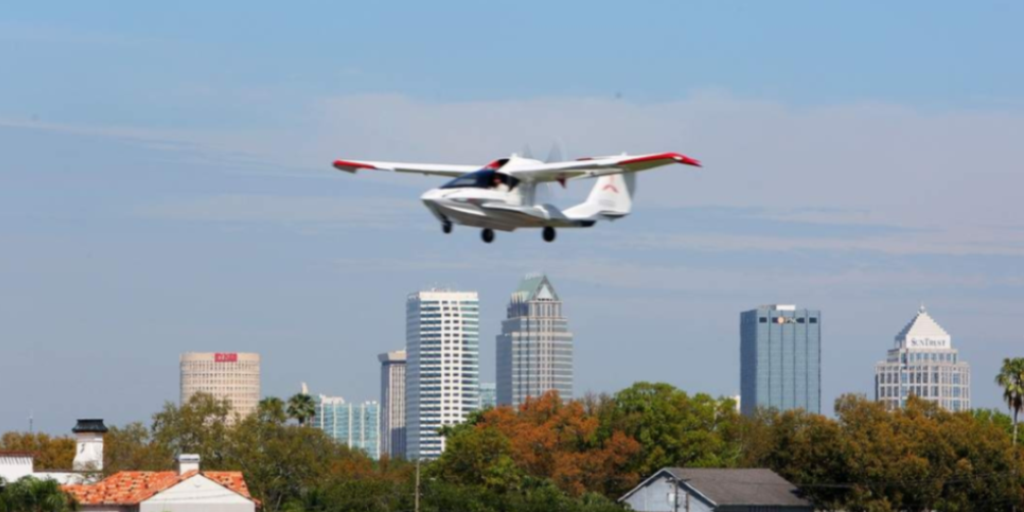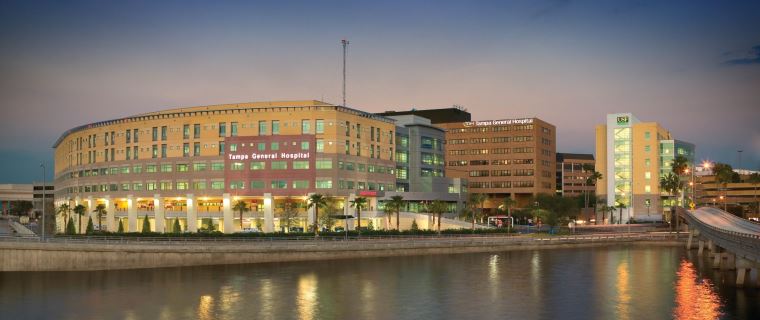This innovative model is now being closely studied by Florida State University (FSU) and leaders in Tallahassee as they explore options for transforming the city’s flagship hospital, Tallahassee Memorial HealthCare (TMH), into an academic medical center.
Tag Archive for: usf
Construction has been completed on the $189 million University of South Florida (USF) Morsani College of Medicine and Heart Institute.
The college is now open at the Water Street mixed-use development in downtown Tampa, which is expected to become one of the most vibrant urban environments in America and the world’s first wellness district.
The 395,000-square-foot, academic building is bringing 1,800 students, faculty and researchers to the heart of downtown Tampa and is set to transform health education by focusing on more hands-on, technology-enabled learning. Standing 13 floors high, the innovative building features a 400-seat auditorium, clinical teaching labs and research laboratories, office space and a wellness center. The school teamed up with Microsoft to create the first-ever Medical School of Innovation, placing USF among the most innovative higher education institutions for integrating technology into medical education.
In December 2014, initial approval was granted to relocate and rebuild the medical college, bringing it within a mile of its primary teaching hospital, Tampa General Hospital. In collaboration with design firm HOK, Skanska began construction work in August 2017 and the project was delivered this January 2020.
Situated within the mixed-use Water Street development, faculty and staff will be able to live, work and study along the downtown Tampa waterfront and provide healthcare services to people in need through USF’s community outreach initiatives.
In Tampa, Skanska has also completed the $122 million renovation and expansion of the Tampa International Airport’s main passenger terminal in 2019 and the $35.6 million renovation and expansion of the Julian B. Lane Riverfront Park in 2018. Nearby in St. Petersburg, Skanska delivered the Johns Hopkins All Children’s Hospital Research and Education Building in 2018 and is currently reconstructing the St. Petersburg Municipal Pier and Pier Approach.
Source: School Construction News

With just four months to go before the University of South Florida opens its new medical school in downtown Tampa, the cost of the building is rising by another $16 million.
The USF Board of Trustees tentatively approved the increase on Tuesday, but with conditions. Board members directed medical school officials to provide a “floor-by-floor breakdown” of expenses and a detailed review of what led to the shortfall in funds, all within the next five days.
The construction budget for the USF Health Morsani College of Medicine and Heart Health Institute has risen from $172.9 million in October 2017 to $189 million.
The increase was blamed on unanticipated costs for research equipment, technology and furniture as well as a general rise in construction costs. The building, which is 90 percent complete, is expected to open in time for classes beginning Jan. 13.
University officials originally earmarked $152 million for construction and design costs of the building in 2015. The board revised the budget to $172.9 million in 2017, when the school decided to add two floors.
Trustees did not take the new request for more funding lightly.
Jordan Zimmerman, the board’s chairman, at first told the USF Health team behind the medical school project that there wasn’t enough extra money in the school’s budget to accommodate their request. He suggested USF Health seek more donations to meet the new costs, and he dismissed any thought of asking the state for more funding.
The 95,000-square-foot, 13-story tower has been billed as a state-of-the-art teaching and research facility connecting USF’s campus with downtown Tampa.
Tampa General Hospital, the teaching partner of USF Health, signed a $20 million lease for 25,000 square feet of space inside the new building. USF’s College of Pharmacy will also use some space, thanks to a $10 million donation from the Taneja Family Foundation.
When it opens, the building will house about 1,800 students and researchers.
USF Health warned about the potential impact of tariffs, which could continue to drive up construction costs this year. Design and construction make up the bulk of the expenses for the building, which rose from $143.5 million in 2014 to $150.8 million in 2019. The two additional floors cost around $10.3 million. Technology costs for the building are estimated to be $9.6 million.
USF officials said they are continuing to seek donations for the project. The majority of the funding is coming from the state, with some from USF’s auxiliary and foundation support.
Source: Tampa Bay Times



